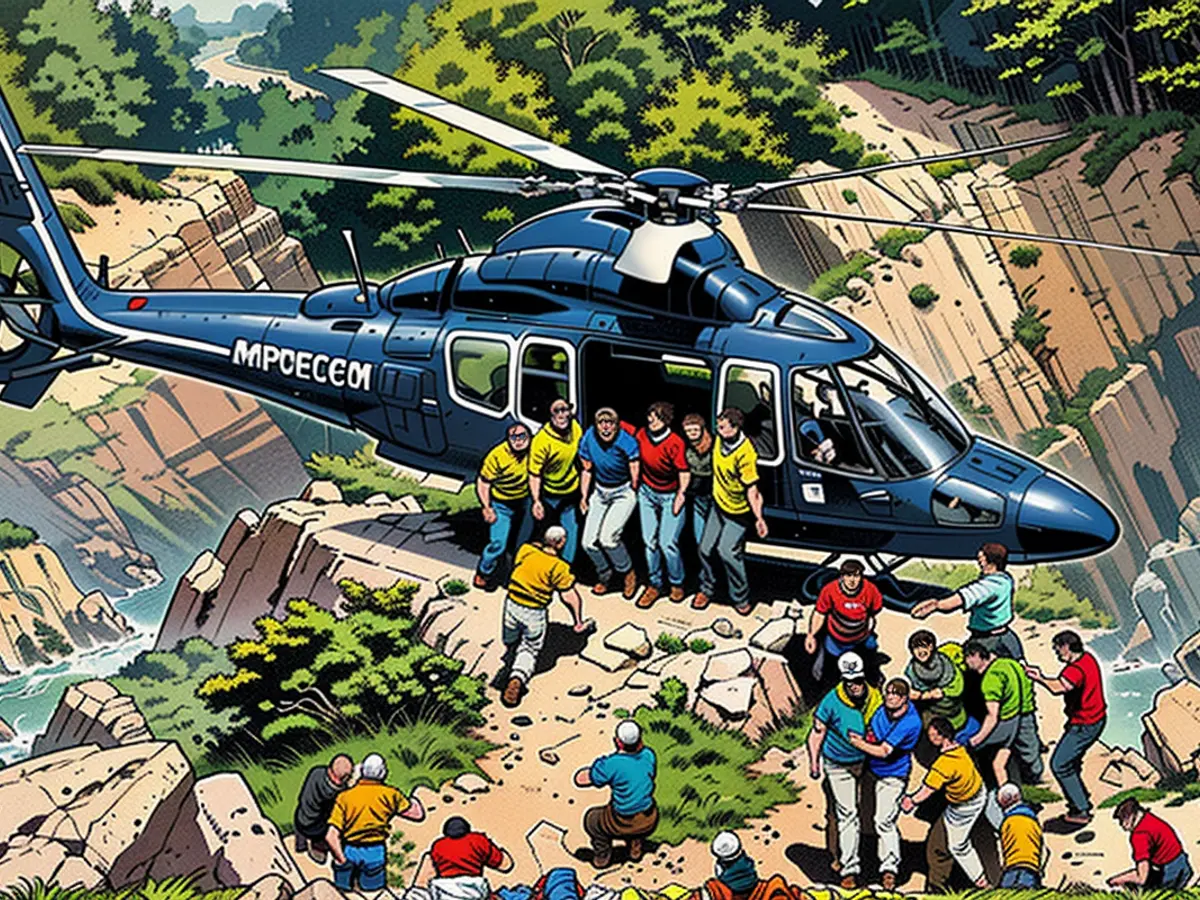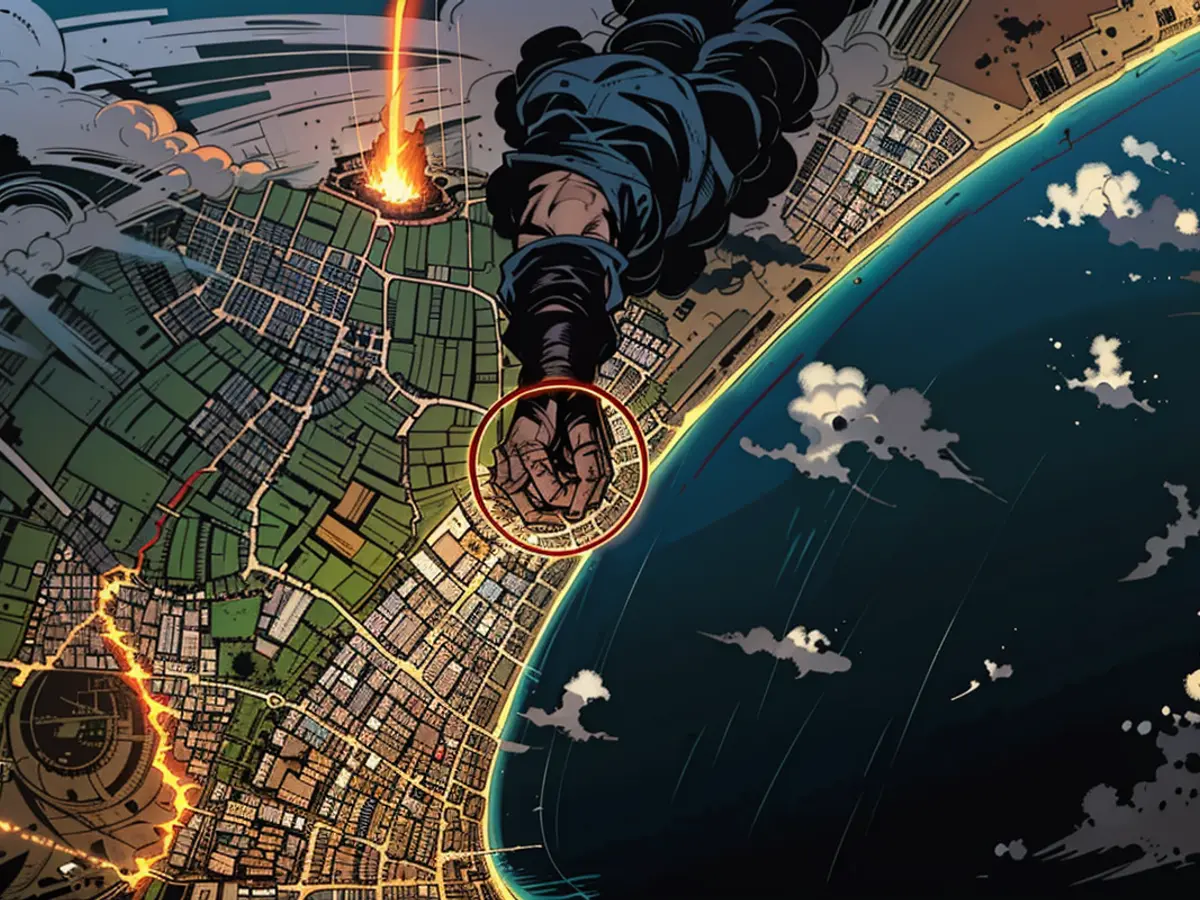Cave Explorer Struggles to Recall the Mishap Event
Deep beneath Germany's earth, researcher Johann Westhauser encountered a tragic incident in the country's deepest pit. His miraculous rescue on June 19, 2014 gained widespread attention. Post-recovery, Westhauser astonishingly decided to descend into the pit once again.
Not only his helmet but even his personal belongings were found later, a thousand meters beneath the surface. The accident occurred over a decade ago when a chunk of clay fell from above, causing Westhauser, who was far from medical aid, a severe skull-brain injury. His helmet could only temper the impact slightly. An international rescue team, consisting of more than 700 members, worked tirelessly for days to save Westhauser's life. The circumstances were critical, and his survival was uncertain. He was rescued eleven days after the accident from the treacherous Riesending Shaft at Untersberg near Marktschellenberg in the Berchtesgaden Land. Doctors were astounded by his recovery.
Naturally, Westhauser returned to the pit. He had been there numerous times since then, continuing his research alongside colleagues from the Arbeitsgemeinschaft für Höhlenforschung Bad Cannstatt. And: "We have cleaned up the accident site." Four years later, he discovered his personal items, clothing, and equipment there.
The ardent cave explorer, employed as a technician at the Karlsruher Institut für Technologie (KIT) in the Institute for Applied Physics, was one of the first to investigate the Riesending Shaft following its discovery in 1996, approximately from around 2002. His admiration for the pit remained unchanged, as he stated later. "I have recovered well. I have no bad memories." His brain had erased the accident.
Memory lapses are indicative of a skull-brain trauma. "There are only small fragments of memories available," Westhauser recalls. "The doctors were worried about the recovery of memories in the last passages before the exit." This disorientation can affect injured individuals after extended periods in cold environments. But Westhauser thought: "Now everything is good, and I don't have to do anything else."
The Help of Many
The stunning rescue operation attracted more than 700 helpers from Germany, Austria, Switzerland, Italy, and Croatia. Most of them were unfamiliar with the pit's conditions. Media from all over the world covered the event. Tons of supplies were airlifted to the entrance of the cave, which was secured with ropes and metal stakes to serve as footholds. The rescuers diverted mist from waterfalls using planes, removed loose debris, and prepared for the possibility of further rockfall.
As Westhauser is carried through the passages and shafts on a stretcher, a protective white helmet with a visor shields his head. He cannot recollect the specific type of helmet, but: "It was comfortable." On June 19, eleven days after the accident, the rescuers hauled him over the final vertical shaft to daylight.
Consequences of the Accident
The accident left its mark on Westhauser. He underwent numerous medical examinations and rehabilitation. The skull-brain trauma led to memory loss. He had to learn to read and write again. However, his passion for cave exploration remained undeterred, and with the support of his colleagues and family, he managed to rebound and return to his work. Today, he is back in the pit, exploring and documenting new discoveries. He is grateful for every day he can spend in the depths, for every new challenge, and for the opportunity to share his passion with others.
Since then, the cave has been closed with a massive stainless steel grille to prevent amateur intrusion. Anyone wishing to enter must apply with the commune of Bischofswiesen. The excursions of the Cannstatter researchers typically last five to six days. Meanwhile, they have adopted the Cave-Link system - a kind of cave phone - along with them. "We have learned a lot."
According to the mountain rescue, the accident resulted in the strengthening of national and European cooperation and the intensification of the relationship between cave researchers and cave rescuers. In 2023, around a hundred cave rescuers in Chiemgau underwent emergency training. Bergwacht-Spokesperson Roland Ampenberger commented, "This operation was particularly significant in all respects, from the location, the duration, the number of involved forces. - The performance capability of international cooperation should remain in our memory."
The German Caving and Karst Researchers' Association established a new solidarity fund for those affected, as chairman Bärbel Vogel stated.
Dangers Abound
People continue to encounter difficulties in caves. Rockfalls, cold temperatures, disorientation, and blocked escape routes are potential hazards. A recent incident in Thailand made headlines when a team of twelve young soccer players and their coach were stranded following heavy rain. The rescue operation, which lasted over 17 days and involved approximately 1000 people, resulted in the death of a rescuer. The risk to the lives of helpers was also a concern at the Untersberg, although these discussions were held privately. Westhauser expressed his gratitude to rescuers and "all those who helped me intensely" in a video message after his rescue from the intensive care unit of the Murnau Clinic.
Researchers, including Westhauser, have ventured into approximately 6 km of previously unexplored cave passages with their colleagues from Cannstatter. Their objective is to establish a potential link to the Gamslöcher-Kolowrat Cave System located in Austria. "We're trying to figure out the cave's route," says Westhauser. Along the way, they gather samples for scientific research, such as sediments which can reveal data about Saharan dust or pollutant intrusions. These substances can quickly contaminate the groundwater in nearby valleys.
Westhauster, who's about to turn 64, is still up for the challenging cave expeditions in the Riesending-Shaft Cave. However, as time goes by, he might need to shift focus to smaller caves when the strenuous tours become too much.

Read also:
In recognition of the international effort, the rescue operation attracted assistance from various countries, including Germany, Austria, Switzerland, Italy, and Croatia. This diverse team of over 700 rescuers was instrumental in the cave rescue from Berchtesgaden.
The successful rescue of Johann Westhauser from the Riesending Shaft in Bavaria garnered attention on an international scale, with media outlets from numerous nations reporting on the event.








